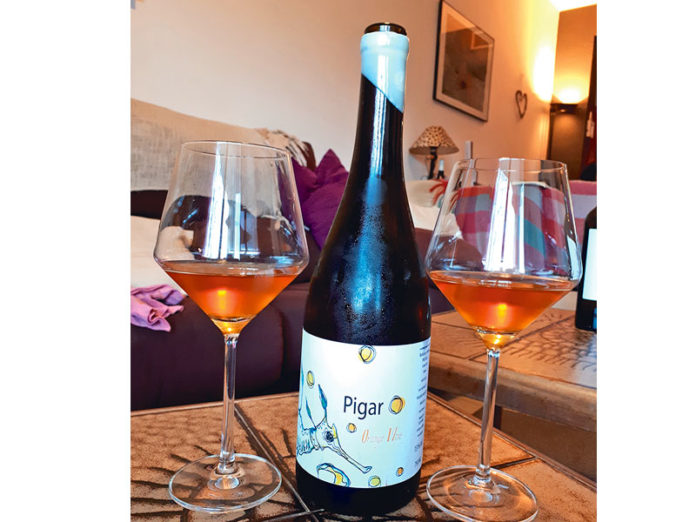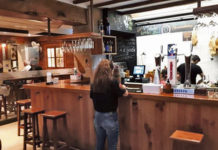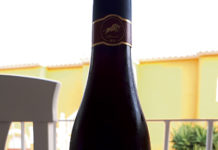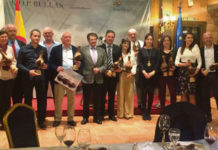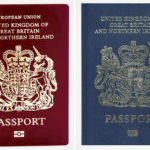Bodegas Pigar, whose co-founder (recently, and with his father), Juan Piqueras, International Wine & Spirits Competition gold medal winning wine-maker (when working for another winery) crafts a Spanish Chardonnay, that I believe will become a benchmark for its style. He also makes a super orange wine – and yes, you are starting to hear more about this newly revived, but ancient (that’s 8,000 years!) method of making wine!
Let’s start with the Chardonnay. (Incidentally, I used to know a dog called Chardonnay, a beautiful golden retriever, named presumably after an Aussie Chardy, because of the colour! However, she perhaps might have been named after a black retriever – you’ll understand why soon!).
Juan’s Pigar Chardonnay 2017 isn’t in the style of such a richly coloured Aussie Chardonnay; nor is it like an opulent, oak first Californian one of a few decades ago. It isn’t a steely Chablis, or an elegant Burgundy. It makes its own mark – and all the better for it. However, its creation does owe something to an old style Burgundy!
Juan’s Chardonnay vines are but ten years old and grown in dry soil, yes, but it’s quite fertile too, which in some ways is the antithesis of modern fine wine making. The nutrients in the soil provoke lots of bunches, which is what Juan requires for this wine, as lots of bunches mean that the grapes remain very small and, crucially, ripen slowly. This, in turn, means that they maintain the exact level of acidity that he requires.
Now for the Burgundy bit: Black Chardonnay (presumably translated from the French?), is the name given to an old (perhaps 80yrs) method of winemaking, from Chardonnay’s natural home! The juice from the grapes is subjected to the oxygen that’s in the air, turning it almost black! However, soon the phenols that are in the must (juice), because of the crushing (note, crushing, not gentle pressing), start to feed on the oxygen, magically eradicating it and returning the chardonnay juice to its natural colour, before fermentation, using wild yeasts! Fascinating* – and completely new to me!
For extra texture, as well as a contribution to the flavour of the wine, this Chardonnay is left with its lees for six months, with stirring, resulting in a slight, very pleasing creaminess. However, there is also the fresh and refreshing acidity, which keeps the wine fully alive.
The result is an astonishingly good, Spanish Chardonnay!
Juan has also just marketed his orange or amber wine. Orange wines are made from white wine grape varieties, but with extended skin contact – as in red wine making. This long skin contact gives the wine an amber, or orange colour – but a lot more too! I’ve tasted several orange wines recently and I have to say, I’m a fan – though they are dividing commentators.
I actually think that they will eventually be accepted by most wine people, and ultimately most consumers as well. I hear, for example, that it’s common in Canada for orange wines to feature on restaurant wine lists, up there with whites, reds, rosés et al. Conservative minded Spain (wine-wise, that is!) will take some convincing – but I’m predicting that it will happen!
If you’d like to try this ‘new’ style of wine, Pigar orange wine is available now. The generally accepted idea is that such wines do better when they are made from aromatic varieties – Moscatel is such a variety, of course, and prevalent in the Costa Blanca. It is used in Juan’s orange wine, but at only 10%, its contribution has to be less than that of the other shareholder, Tardana, also known as Planta Nova.
This variety is rare, used mostly just in Utiel-Requena. Along with the Moscatel, it was kept in contact with the skins for 25 days and fermented in tinajas, earthenware amphorae, where it was aged for four months. I love it!
But how to describe it! It has a certain nutty aroma, there’s a sense of it being a little like a spirit in its mouthfeel and flavour and smell, with faint touches of very dry cider (the English type, served cloudy – though the wine is clear) and perhaps bruised apples and pears. Astounding – you have to try it!
Bodegas Pigar is a work in progress. Juan has established himself and his wines in the market place – however, he is not satisfied with just that. He’s just produced a sparkling wine, made with the very old and DO Utiel-Requena de-listed variety, Royal, by the ancestral method, which precedes the Champagne method, now known as the traditional method. You can contact Juan Piqueras here bodegaspigar@gmail.com















